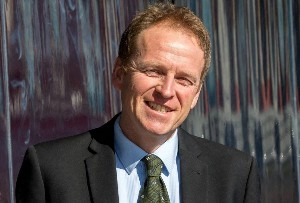
ASB, Westpac, BNZ, and ANZ expect the OCR to lift by 25 basis points in April and then again in May, lifting interest rates.
When interest rates reach their peak depends on the OCR, inflation and bank funding costs, say the banks.
Most longer-term interest rates are now lower than short-term rates and will have a major bearing on what borrowers will fix at when their mortgages roll off the cheaper to higher interest rates. Until recently most have tended to pick one to two-year rates.
ASB says as households grapple with higher mortgage interest rates as well as the cost of living, it means outgoings in many households will rise by $150 a week.
Just under 60% of current fixed-rate loans are due to be reset this year, often at much higher rates. All up, the average mortgage interest rate facing borrowers will likely increase by roughly 150 basis points, ASB senior economist Mark Smith says.
“That will see household debt servicing costs push back towards historical averages from a record low share of household income. The increase in weekly outlays averages out to an extra $50 per household,” he says.
This is likely to be the third consecutive year of chunky increases.
However, the impacts will be highly uneven. More highly indebted households will experience significantly higher increases running into the hundreds of dollars per week.
Smith says other households with high interest-bearing deposits and little debt will actually experience a positive impact on after-tax cash flows from higher interest rates. This group, however, is largely in the minority.
The household sector is a net debtor on average, with total household debt exceeding household deposits by about $133 billion - about $70,000 per household.
With income growth unlikely to keep pace, household spending is likely to struggle this year, says Smith.
“Many households are currently living payday to payday, and another year of sizable cost increases will add to budgetary pressures. Others will cope with higher costs but will have to make some cutbacks to keep credit card bills manageable. Some households, particularly those with little debt and higher savings, will do okay,” says Smith.
He says discretionary spending is expected to be under pressure, with households also likely to economise on essential spending. “Whether this will be sufficient to cool inflationary pressures and prevent further hikes in the OCR remains to be seen.”
Housing market
Despite the housing market continuing to soften, housing- related costs continue to point upwards, says the ASB.
Construction costs and those for dwelling maintenance services are expected to continue to strengthen given the multi-billion repair bill from cyclone Gabrielle on top of already-acute labour shortages.
After showing signs of slowing, dwelling rents are expected to push higher still as landlords recoup rising costs and strengthening net immigration adds to the demand for rental dwellings, says Smith.
Local authority rates look set to rise steeply for a third consecutive year; an 8 per cent annual increase in housing costs or $30 a week looms.
Facing costs
Westpac senior economist Michael Gordon says adding to inflation woes are businesses still facing a range of cost increases, workers are still in short supply and the upward pressure on wages remains strong.
“We recently revised our OCR forecast to a peak of 5% this year, with one further 25 basis point increase at the next review in April.
“However, with the RBNZ continuing to talk tough on inflation, the risks lean towards further increases beyond then.”
Moving feast
The BNZ still has a 25 basis point hike in mind for the Reserve Bank’s monetary policy review next week and another 25bps for the May monetary policy statement, taking the OCR to a 5.25 per cent peak.
BNZ senior economist Craig Ebert says it is starting to feel like an envelope of expectations rather than a baseline to move around.
“For its part, market pricing has trimmed its expectation for April to barely 5.00% and now sees a peak of about 5.25% by July.”




Comments
No comments yet.
Sign In to add your comment